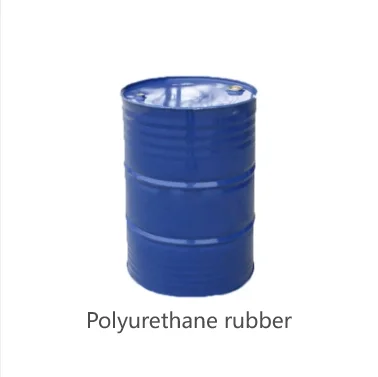The automotive industry is undergoing a significant transformation as manufacturers seek innovative materials that enhance performance, durability, and comfort. One such material making waves is polyurethane rubber. Shanghai Tiancheng Chemical, a professional supplier of chemical raw materials, recognizes the potential of polyurethane rubber in automotive components. This article explores the advantages of polyurethane rubber, its applications in the automotive sector, and how it compares to traditional materials.
Understanding Polyurethane Rubber
What is Polyurethane Rubber?
Polyurethane rubber is a versatile elastomer that combines the desirable properties of both rubber and plastic. It is synthesized from the reaction of polyisocyanates and polyols, resulting in a material that exhibits excellent elasticity, durability, and resistance to wear and tear. Polyurethane rubber can be formulated to achieve varying degrees of hardness, flexibility, and resilience, making it suitable for a wide range of applications.
Key Properties
Polyurethane rubber possesses several key properties that make it an attractive choice for automotive components:
High Durability: Polyurethane rubber is known for its exceptional resistance to abrasion, tearing, and impact. This durability translates into longer-lasting components that require less frequent replacement.
Flexibility: The material retains its flexibility over a wide temperature range, making it suitable for use in various environmental conditions.
Chemical Resistance: Polyurethane rubber exhibits excellent resistance to oils, solvents, and other chemicals commonly found in automotive applications.
Vibration Damping: Its inherent elasticity allows polyurethane rubber to absorb vibrations effectively, contributing to a smoother ride.

Applications in the Automotive Industry
1. Suspension Components
Polyurethane rubber is widely used in suspension components such as bushings and mounts. These parts play a crucial role in isolating vibrations from the road and enhancing vehicle stability. Compared to traditional rubber bushings, polyurethane bushings offer improved performance by providing better handling characteristics and reducing body roll during cornering.
2. Engine Mounts
Engine mounts made from polyurethane rubber help reduce engine vibrations transmitted to the vehicle's chassis. This results in a quieter cabin environment and improved driver comfort. The durability of polyurethane ensures that these mounts maintain their performance over time, even under the stresses of high-performance driving.
3. Gaskets and Seals
Polyurethane rubber is an excellent choice for gaskets and seals due to its resistance to fluids and environmental conditions. These components are vital for preventing leaks in various automotive systems, including engines and transmissions. The longevity of polyurethane gaskets reduces maintenance needs and enhances overall vehicle reliability.
4. Bumpers and Body Panels
In the production of bumpers and body panels, polyurethane rubber provides lightweight yet strong solutions that can absorb impacts effectively. This characteristic not only enhances vehicle safety but also contributes to fuel efficiency by reducing overall weight.
5. Interior Components
Polyurethane rubber is also utilized in various interior components such as dashboard pads, door seals, and sound-deadening materials. Its ability to dampen vibrations contributes to a quieter cabin experience while providing a soft-touch feel that enhances overall comfort.
Advantages Over Traditional Materials
Durability and Longevity
One of the most significant advantages of polyurethane rubber over traditional materials like natural rubber is its durability. While natural rubber can degrade over time due to exposure to UV light, ozone, and temperature fluctuations, polyurethane maintains its properties longer under similar conditions. This longevity translates into cost savings for manufacturers due to reduced replacement frequency.
Enhanced Performance
Polyurethane rubber's mechanical properties allow it to outperform traditional materials in various applications. For instance, while natural rubber may provide good vibration absorption, polyurethane offers superior handling characteristics without compromising comfort. This balance makes it an ideal choice for performance-oriented vehicles.
Customizability
Manufacturers can tailor polyurethane formulations to meet specific performance requirements by adjusting hardness levels and other properties. This customizability enables engineers to design components that precisely match the demands of different vehicle models or driving conditions.
Environmental Resistance
Polyurethane rubber's resistance to chemicals, oils, and environmental factors makes it suitable for use in harsh automotive environments. Unlike traditional materials that may swell or degrade when exposed to certain sub
stances, polyurethane maintains its integrity over time.
Challenges and Considerations
While polyurethane rubber offers numerous advantages, there are challenges associated with its use:
Cost Considerations
The initial cost of polyurethane components may be higher than those made from traditional materials like natural rubber or plastic. However, manufacturers often find that the long-term savings from reduced maintenance and replacement costs justify this initial investment.
Processing Complexity
The manufacturing process for polyurethane components can be more complex than that for traditional materials. This complexity may require specialized equipment or training for workers involved in production.
Future Trends in Polyurethane Rubber Applications
As technology advances, several trends are emerging regarding the use of polyurethane rubber in automotive applications:
Integration with Smart Technology
The incorporation of smart technology into automotive components is on the rise. Future developments may see polyurethane parts embedded with sensors that monitor performance metrics such as wear levels or vibration intensity, allowing for predictive maintenance strategies.
Sustainability Initiatives
With increasing pressure on manufacturers to adopt sustainable practices, there is a growing interest in developing bio-based polyurethanes derived from renewable resources. These innovations could reduce the environmental impact associated with traditional petroleum-based polyurethanes while maintaining performance standards.
Enhanced Performance Materials
Research into advanced formulations may lead to even more robust versions of polyurethane rubber with enhanced properties such as improved heat resistance or lower density without sacrificing strength.
Conclusion
Polyurethane rubber represents an innovative solution for automotive components, offering a unique blend of durability, flexibility, and performance enhancements over traditional materials. As Shanghai Tiancheng Chemical continues to supply high-quality chemical raw materials tailored for this application, manufacturers can leverage the benefits of polyurethane rubber to improve vehicle quality and driver experience significantly. With ongoing advancements in material science and technology integration within the automotive industry, the future looks promising for polyurethane applications in enhancing vehicle performance while meeting modern consumer demands for reliability and comfort.
Polyurethane Rubber: A Reliable Solution for Sealing and Protection in Engineering Applications


